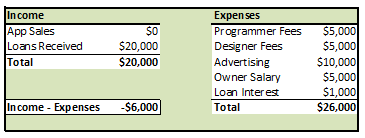
The potential benefits provided by this technology has already started transforming industries ranging from healthcare and retailing all the way to finance and banking; leading many experts to believe that it will continue playing an even bigger role going forward. Advanced machine learning techniques have enabled organizations to access new sources of capital through automated trading platforms, allowing them to buy and sell assets from anywhere around the world without manual intervention. By leveraging AI-driven analytics, organizations can gain a strategic advantage by being able to make informed decisions about their resource allocation and future strategies. AI-based tools are also becoming an invaluable asset to financial professionals by helping them make better decisions faster than ever before. With its ability to quickly analyze large datasets, it is revolutionizing the way accountants work today.

Predictive modeling
This efficiency boost is crucial for financial institutions looking to enhance productivity and customer satisfaction in a competitive market. AI enhances cybersecurity in financial institutions by detecting and responding to threats in real-time, thereby safeguarding sensitive data and financial assets. AI analyzes complex datasets to extract actionable insights, aiding financial is quickbooks self decision-making and strategy formulation. In fraud detection and compliance, AI identifies unusual patterns that deviate from normative behaviors to flag potential frauds and breaches early. AI-driven speech recognition is used in finance to enhance customer interaction through voice-activated banking, helping users to execute transactions or get support without manual input.
Appendix: The AI technology portfolio12

In the future, the use of DLTs in AI mechanisms is expected to allow users of such systems to monetise their data used by AI-driven systems through the use of Internet of Things (IoT) applications, for instance. That said, financial institutions across the board should start training their technical staff to create and deploy AI solutions, as well as educate their entire workforce on the benefits and basics of AI. The good news here is that more than half of each financial services respondent segment are already undertaking training for employees to use AI in their jobs. This portfolio approach likely enabled frontrunners to accelerate the development of AI solutions through options such as AI-as-a-service and automated machine learning.
Will artificial intelligence take over accounting?
It can then clean and process financial data by identifying errors, inconsistencies, or missing values and notifying finance staff of the areas needing attention. For employees, meeting expense policy rules by manually collecting receipts, filling out forms, and submitting expense reports is arduous and error prone. For instance, optical character recognition (OCR)—a form of AI that can scan handwritten, printed, or images of text, extract the relevant information, and digitize it—can help with receipt processing and expense entry.
Separate disclosure should inform consumers about the use of AI system in the delivery of a product and their interaction with an AI system instead of a human being (e.g. robo-advisors), to allow customers to make conscious choices among competing products. Suitability requirements, such as the ones applicable to the sale of investment products, might help firms better assess whether the prospective clients have a solid understanding of how the use of AI affects the delivery of the product/service. To date, there is no commonly accepted practice as to the level of disclosure that should be provided to investors and financial consumers and potential proportionality in such information.
That said, some AI use-cases are proving helpful in augmenting smart contract capabilities, particularly when it comes to risk management and the identification of flaws in the code of the smart contract. AI techniques such as NLP12 are already being tested for use in the analysis of patterns in smart contract execution so as to detect fraudulent activity and enhance the security of the network. Importantly, AI can test the code in ways that human code reviewers cannot, both in terms of speed and in terms of level of detail. Given that code is the underlying basis of any smart contract, flawless coding is fundamental for the robustness of smart contracts.
Further, AI implementation could cut S&P 500 companies’ costs by about $65 billion over the next five years, according to an October 2023 report by Bank of America. This structure—where a central team is in charge of gen AI solutions, from design to execution, with independence from the rest of the https://www.intuit-payroll.org/understanding-your-pay-statement-2/ enterprise—can allow for the fastest skill and capability building for the gen AI team. Open access funding provided by Università Politecnica delle Marche within the CRUI-CARE Agreement. We are granted with research funds by our institution which would allow us to cover the publication costs.
As such, many of the suggested benefits from the use of AI in DLT systems remains theoretical, and industry claims around convergence of AI and DLTs functionalities in marketed products should be treated with caution. As such, rather than provide speed of execution to front-run trades, AI at this stage is being used to extract signal from noise in data and convert this information into trade decisions. https://www.quick-bookkeeping.net/ As AI techniques develop, however, it is expected that these algos will allow for the amplification of ‘traditional’ algorithm capabilities particularly at the execution phase. AI could serve the entire chain of action around a trade, from picking up signal, to devising strategies, and automatically executing them without any human intervention, with implications for financial markets.
- While many tasks will be automated or delegated to AI systems, the finance profession will still need human involvement to provide what AI cannot—including human creativity, judgment, emotional intelligence, relationship building, and critical thinking.
- Additionally, as remarked by Ernst et al. (2018), whilst industrial robots mostly perform manual tasks, AI technologies are able to carry out activities that, until some years ago, were still regarded as typically human, i.e. what Ernst and co-authors label as “mental tasks”.
- Finance theories (e.g. Arbitrage Pricing Theory; Black and Scholes 1973) are jointly employed with portfolio management theories (e.g. modern portfolio theory), and the two of them account together for 21% (15) of the total number of papers.
Synthetic datasets can also allow financial firms to secure non-disclosive computation to protect consumer privacy, another of the important challenges of data use in AI, by creating anonymous datasets that comply with privacy requirements. Traditional data anonymisation approaches do not provide rigorous privacy guarantees, as ML models have the power to make inferences in big datasets. The use of big data by AI-powered models could expand the universe of data that is considered sensitive, as such models can become highly proficient in identifying users individually (US Treasury, 2018[32]). Facial recognition technology or data around the customer profile can be used by the model to identify users or infer other characteristics, such as gender, when joined up with other information. The proposal also provides for solutions addressing self-preferencing, parity and ranking requirements to ensure no favourable treatment to the services offered by the Gatekeeper itself against those of third parties. Strategies based on deep neural networks can provide the best order placement and execution style that can minimise market impact (JPMorgan, 2019[8]).
AI is being used by banks and fintech lenders in a variety of back-office and client-facing use-cases. Chat-bots powered by AI are deployed in client on-boarding and customer service, AI techniques are used for KYC, AML/CFT checks, ML models help recognise abnormal transactions and identify suspicious and/or fraudulent activity, while AI is also used for risk management purposes. When it comes to credit risk management of loan portfolios, ML models used to predict corporate defaults have been shown to produce superior results compared to standard statistical models (e.g. logic regressions) when limited information is available (Bank of Italy, 2019[17]).
The identification of converging points, where human and AI are integrated, will be critical for the practical implementation of such a combined ‘man and machine’ approach (‘human in the loop’). The quality of the data used by AI models is fundamental to their appropriate functioning, however, when it comes to big data, there is some uncertainty around of the level of truthfulness, or veracity, of big data (IBM, 2020[31]). Correct labelling and structuring of big data is another pre-requisite for ML models to be able to successfully identify what a signal is, distinguish signal from noise and recognise patterns in data (S&P, 2019[19]). Different methods are being developed to reduce the existence of irrelevant features or ‘noise’ in datasets and improve ML model performance, such as the creation of artificial or ‘synthetic’ datasets generated and employed for the purposes of ML modelling. These can be extremely useful for model testing and validation purposes in case the existing datasets lack scale or diversity (see Section 1.3.4).
Looking at the financial-services industry specifically, we have observed that financial institutions using a centrally led gen AI operating model are reaping the biggest rewards. As the technology matures, the pendulum will likely swing toward a more federated approach, but so far, centralization has brought the best results. Canoe ensures that alternate investments data, like documents on venture capital, art and antiques, hedge funds and commodities, can be collected and extracted efficiently.
Section two reviews some of the main challenges emerging from the deployment of AI in finance. It focuses on data-related issues, the lack of explainability of AI-based systems; robustness and resilience of AI models and governance considerations. The financial services industry has entered the artificial intelligence (AI) phase of the digital marathon.






